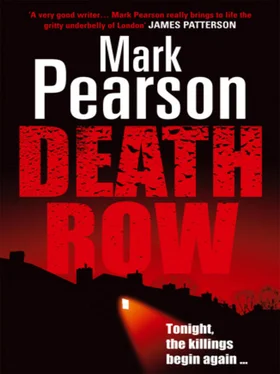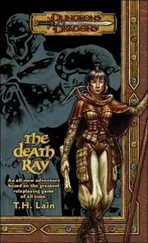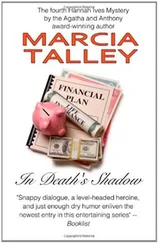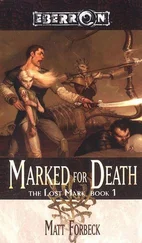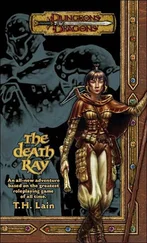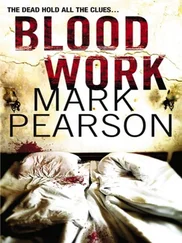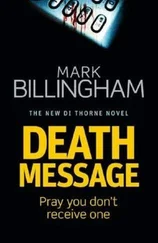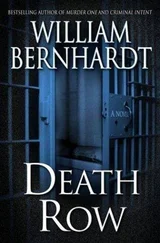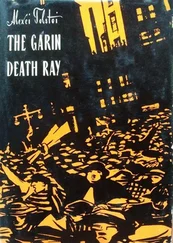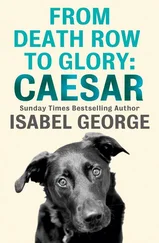Mark Pearson - Death Row
Здесь есть возможность читать онлайн «Mark Pearson - Death Row» весь текст электронной книги совершенно бесплатно (целиком полную версию без сокращений). В некоторых случаях можно слушать аудио, скачать через торрент в формате fb2 и присутствует краткое содержание. Год выпуска: 2011, ISBN: 2011, Издательство: Arrow, Жанр: Триллер, на английском языке. Описание произведения, (предисловие) а так же отзывы посетителей доступны на портале библиотеки ЛибКат.
- Название:Death Row
- Автор:
- Издательство:Arrow
- Жанр:
- Год:2011
- ISBN:9781407060118
- Рейтинг книги:3 / 5. Голосов: 1
-
Избранное:Добавить в избранное
- Отзывы:
-
Ваша оценка:
- 60
- 1
- 2
- 3
- 4
- 5
Death Row: краткое содержание, описание и аннотация
Предлагаем к чтению аннотацию, описание, краткое содержание или предисловие (зависит от того, что написал сам автор книги «Death Row»). Если вы не нашли необходимую информацию о книге — напишите в комментариях, мы постараемся отыскать её.
Death Row — читать онлайн бесплатно полную книгу (весь текст) целиком
Ниже представлен текст книги, разбитый по страницам. Система сохранения места последней прочитанной страницы, позволяет с удобством читать онлайн бесплатно книгу «Death Row», без необходимости каждый раз заново искать на чём Вы остановились. Поставьте закладку, и сможете в любой момент перейти на страницу, на которой закончили чтение.
Интервал:
Закладка:
Maureen Gallagher closed the large oak door behind her and walked into the church, her soft shoes making a gentle whispering, shuffling sound as she paused and knelt painfully, wincing a little as she felt the tendons in her joints crackle. She made a quick sign of the cross and rose again slowly, her knees creaking audibly this time, and Maureen winced again with the pain of it. Feeling much older than her forty-seven years she put a hand on the back pew of the church to steady herself. She straightened the scarf that completely covered her head and looked up at the altar and then around at the large stained-glass windows that marched along both flanks of the building. Ten of them in total. The night sky was coal black outside, but the lights she had put on filled the church with cold if brilliant illumination and picked out the blues and the reds in the windows so that they did indeed seem to shine bright with God’s glory. Maureen looked at them for a moment or two and then lowered her eyes, squeezing them shut as though in pain, her breathing ragged.
It was a small church built sometime in the mid-1950s. Utilitarianism winning out over ornamentation. The stained-glass windows with their overtly Catholic themes were the only stylistic nod to denomination. The small local Catholic community that it had been built to service was a far cry from the days when Saint Mary’s, the large church that sat on the crest of the nearby hill like a fortress, had been built. Commissioned by Archbishop Lanfranc and consecrated by Saint Anselm in 1094. Its towering wooden steeple was covered in twelve tonnes of lead and was visible for miles around. William the Conqueror built cathedrals and churches and monasteries as hymns to God in stone and mortar and toil. Henry the Eighth destroyed them and his daughter and descendants set about destroying the Roman Catholic Church in England itself, so that long, long before 1956 Roman Catholics had become only a small minority in the country. That had changed in recent years, of course, with the influx of eastern European immigrants, so that there were probably more actively practising Roman Catholics in England now than there were Protestants. But Saint Mary’s on the hill was now Church of England, and Saint Botolph’s below it in the residential sprawl surrounding the town had been built as a thoroughly modest affair. They were as different, one from the other, as a palace is from a garden shed. It had a plain rectangular shape, and a row of ten pews flanked either side of the central aisle that led to a simple altar, raised on a painted concrete base with a brass rail at the front where the communicants would kneel to receive the wafer.
Maureen Gallagher had been a volunteer at the church for five years but had never taken communion. She found the gazes of the saints and the cruciform Christ that hovered over the altar with arms outstretched almost intolerable. She had taken a pilgrimage to Walsingham once, five years ago, in a desperate effort to make amends. But the weight of the silence and the darkness and the sweet smoky smell of burning candles in the many, many medieval churches she visited had filled her soul with despair and crushed her spirit under the guilt she bore like the carapace of a beetle broken under a workman’s heel. Some sins couldn’t be forgiven, she knew that. But she came to Saint Botolph’s church every morning with her tray of cleaning materials and on her hands and knees scrubbed, polished and buffed the floors and the wooden pews, driving the candle smoke from her memory with the sweet smell of beeswax and the artificial aromas of spray polish. And if she could only bear a glance now and then at the watching figure on the wall, it was nothing like the leaden despair she had felt in the shrines of Walsingham.
Maureen came late each night, summer or winter, long after anyone else, priest or parishioner, had left. She liked the solitude and silence when she worked. She came to Mass alone and sat in the back pew, neither making eye contact with her fellow worshippers nor engaging in conversation after the service. She had barely spoken fifty words to the priest, Father Carson Brown, since she had first volunteered her services five years before. She was so used to being wrapped up in her own quiet world of silent prayer and penance that she didn’t really register the sound that night of the door opening behind her as she knelt rubbing an old yellow duster over the brass of the communicants’ rail. She didn’t hear the soft steps as the visitor approached behind. What brought the presence to her attention was the dark figure and pale face distorted and reflected in the mellow curve of the rail. She turned around and looked up. The lights overhead seemed brighter now, shining on the stained-glass windows and somehow putting a nimbus around the visitor’s face like a vision of a latter-day saint. Only the glow in the eyes that looked down on her, with no mercy or seeming humanity, didn’t seem to come from the church lights alone. Maureen Gallagher put up a hand to shield her eyes from their glare and brought the face into focus. It took a moment or two and then the breath leaked from her body as the realisation dawned on her. The weight she had been carrying for so very long seemed to rise from her for the briefest of moments.
‘It’s you,’ she said.
Then a thunderbolt hit her in the heart. And the weight was gone for ever.
SUNDAY
Not for the first time in his life Father Carson Brown was feeling guilty. It was a very Catholic emotion, surely enough, he realised, and he was a Catholic priest after all, but it wasn’t a strong enough emotion to stop him from returning to the scene of the crime. Or to the woman to be more precise.
Sarah Jane Keeley. She had dark honey-coloured hair that tumbled around white shoulders that were sprinkled with the lightest of freckles, and wide blue eyes that were regarding the priest with the sort of lustful playfulness that Rome would certainly never have approved of.
Father Brown tucked his shirt into his trousers and buttoned them up. ‘You are a bad woman, Sarah Jane,’ he said.
The woman in question was lying on the bed and smiling languidly up at him, a sheet held to her chest, the tip of her tongue licking the ruby moistness of her top lip in a slow, sensual curve.
‘Do you have to go?’ she asked, with a coy smile playing now on her perfectly formed cupid’s-bow lips.
‘I do,’ he replied. ‘And there’s no point pouting like Marilyn Monroe! There’s a Union of Catholic Mothers’ meeting this morning and I have to make sure everything is set up for them.’
Sarah Jane grinned. ‘John won’t be back until tonight, you know?’
‘I know.’ Father Carson Brown smiled back at her. John Keeley was the reason he was feeling guilty. They had grown up together, best friends through primary school and then secondary school, the Salvatorian College Catholic school, not a hundred miles from the street in Harrow where John Keeley now lived and where he himself would visit whenever his old friend was away on business.
At eighteen John Keeley had gone to university to study law and Carson Brown had gone first to seminary college and then on to the priesthood. The truth of the matter was that the two boys had both been in love with Sarah Jane Keeley since they had met her in infant school. Not that they knew it at the time, of course. Sarah Jane had been a complete tomboy, but the three of them had been inseparable and as they grew into teenagers it was clear that the friendship between them had also grown into something else. But it was John that she clearly fancied, so Carson had kept his distance, never revealing his true feelings for her. In fact, he fell so hopelessly in love with her at age sixteen that he decided if he couldn’t have her then he wouldn’t have any other woman. He threw himself into his studies and volunteer work at his church, Our Lady and Saint Thomas of Canterbury, and delighted his surprised parents when he announced that he wished to train for the priesthood. It took him many years until he finally made his way back to a position in Harrow and six months after that before he made his way into a position with Sarah Jane. And it wasn’t the missionary one.
Читать дальшеИнтервал:
Закладка:
Похожие книги на «Death Row»
Представляем Вашему вниманию похожие книги на «Death Row» списком для выбора. Мы отобрали схожую по названию и смыслу литературу в надежде предоставить читателям больше вариантов отыскать новые, интересные, ещё непрочитанные произведения.
Обсуждение, отзывы о книге «Death Row» и просто собственные мнения читателей. Оставьте ваши комментарии, напишите, что Вы думаете о произведении, его смысле или главных героях. Укажите что конкретно понравилось, а что нет, и почему Вы так считаете.
